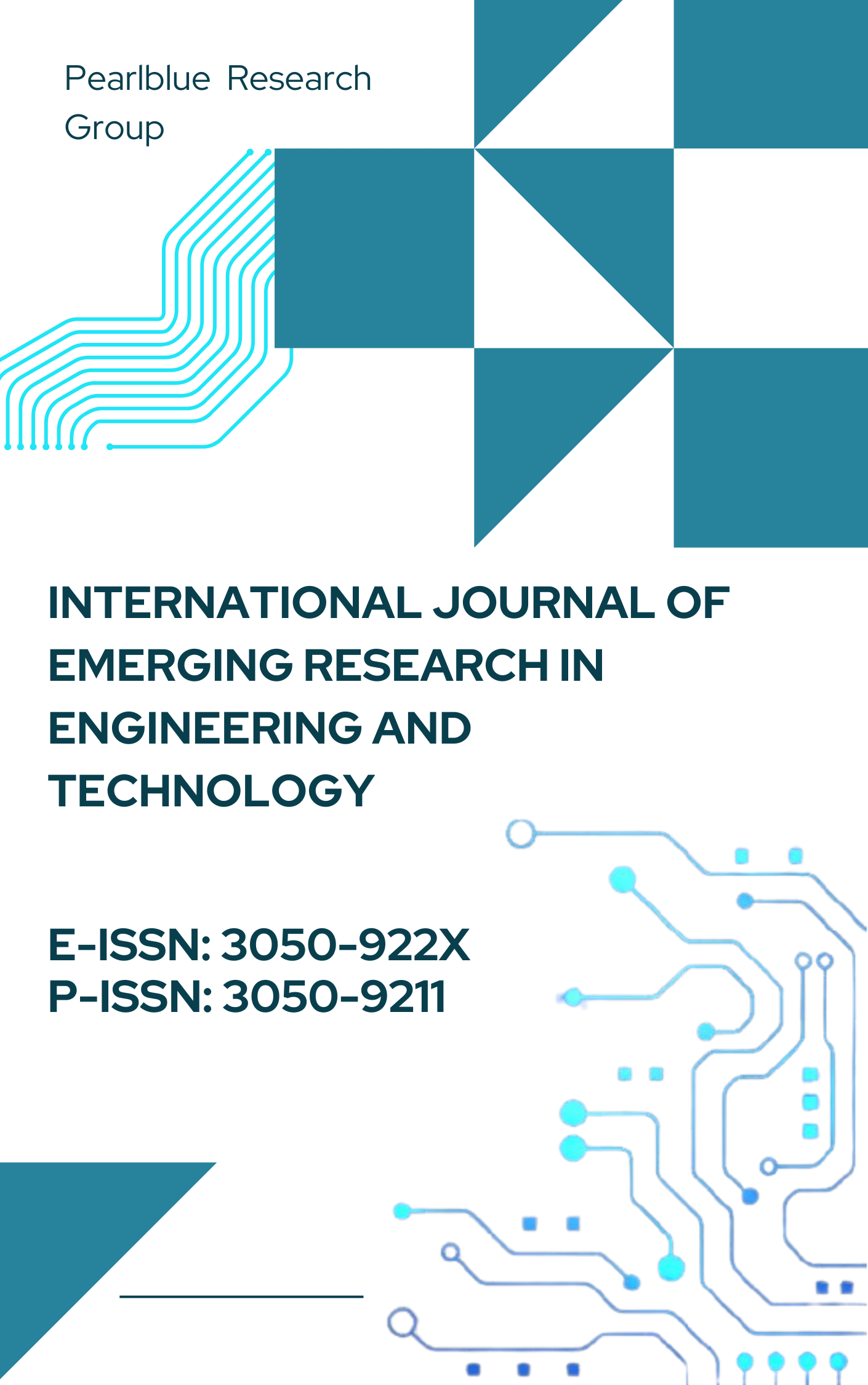Adaptive Makeup Artist Optimization Based Hierarchical Scale Convolutional Neural Network for 5G Network Slicing
DOI:
https://doi.org/10.63282/3050-922X.IJERET-V5I4P113Keywords:
5G network, network slicing, network parameters, Hierarchical Scale Convolutional Neural Network, Makeup Artist Optimization AlgorithmAbstract
Fifth-Generation (5G) network slicing offers Network-as-a-Service (NaaS) for various use cases, permitting network operators to construct numerous virtual networks on distributed infrastructure. With a network slicing, the service providers can deploy their services and applications quickly as well as flexibly for accommodating certain requirements of various services. As a developing technology with many benefits, the network slicing has increased many problems for academia and industry. Some existing slicing techniques lack in capability to dynamically adapt to varying network conditions, decreasing their efficacy in highly changeable scenarios. In this research, Adaptive Makeup Artist Optimization based Hierarchical Scale Convolutional Neural Network (AMAO_HSNet) is introduced for the 5G network slicing. Initially, system model of secure 5G network is simulated. Whenever the network slicing requests arrive from User Equipment (UE), the set of parameters, namely delay rate, packet loss rate, device type and speed, are collected from different devices for network slicing. Lastly, network slicing is performed employing Hierarchical Scale Convolutional Neural Network (HSNet). The training process of HSNet is done using Adaptive Makeup Artist Optimization (AMAO). However, AMAO is derived by incorporating adaptive concept with Makeup Artist Optimization Algorithm (MAOA). The services provided by 5G network can be accessed by an Internet Service Provider (ISP) utilizing Virtual Network Function (VNF). Additionally, AMAO_HSNet has obtained high acceptance rate and resource efficiency of 0.910 and as well as low execution time of 0.172ssec
References
[1] V. P. Rekkas, S. Sotiroudis, P. Sarigiannidis, S. Wan, G. K. Karagiannidis and S. K. Goudos, "Machine learning in beyond 5G/6G networks—State-of-the-art and future trends," Electronics, vol. 10, no. 22, p. 2786, 2021.
[2] Toth, "The use of 5G in military cloud of things solutions," AARMS–Academic and Applied Research in Military and Public Management Science, vol. 21, no. 3, pp. 5-20, 2022.
[3] S. E. A. Alnawayseh, W. T. Al-Sit and T. M. Ghaza, "Smart congestion control in 5g/6g networks using hybrid deep learning techniques," Complexity, vol. 2022, no. 1, p. 1781952, 2022.
[4] M. Malik, A. Kothari and R. A. Pandhare, "Network slicing in 5G: Possible military exclusive slice," in Proceedings of 2022 1st International Conference on the Paradigm Shifts in Communication, Embedded Systems, Machine Learning and Signal Processing (PCEMS), IEEE, 2022.
[5] M. Dubey, A. K. Singh and R. Mishra1, "AI Based Resource Management for 5G Network Slicing: History, Use Cases, and Research Directions," Concurrency and Computation: Practice and Experience, vol. 37, no. 2, p. e8327, 2025.
[6] B. Rashid, A. K. Kausik, A. A. H. Sunny and M. H. Bappy, "Artificial intelligence in the military: An overview of the capabilities, applications, and challenges," International journal of intelligent systems, vol. 2023, no. 1, p. 8676366, 2023.
[7] R. Bajracharya, R. Shrestha, S. A. Hassan, H. Jung and H. Shin, "5G and beyond private military communication: Trend, requirements, challenges and enablers," IEEE Access, vol. 11, pp. 83996-84012, 2023.
[8] S. Wijethilaka and M. Liyanage, "Realizing Internet of Things with network slicing: Opportunities and challenges," in Proceedings of 2021 IEEE 18th Annual Consumer Communications & Networking Conference (CCNC), IEEE, 2021.
[9] Gkelias, N. K. Panigrahy, M. Mobayenjarihani, K. K. Leung, D. Towsley, P. J. Baker, O. Worthington and L. Fowkes, "Resource Management in Software Defined Coalitions (SDC) through Slicing," in Proceedings of MILCOM 2021-2021 IEEE Military Communications Conference (MILCOM), IEEE, 2021.
[10] M. Symeonides, D. Trihinasy, G. Pallis, M. D. Dikaiakos, C. Psomasz and I. Krikidis, "5g-slicer: An emulator for mobile iot applications deployed over 5g network slices," in Proceedings of 2022 IEEE/ACM Seventh International Conference on Internet-of-Things Design and Implementation (IoTDI), IEEE, 2022.
[11] R. Dangi and P. Lalwani, "Harris Hawks optimization-based hybrid deep learning model for efficient network slicing in 5G network," Cluster Computing, vol. 27, no. 1, pp. 395-409, 2024.
[12] K. Suh, S. Kim, Y. Ahn, S. Kim, H. Ju and B. Shim, "Deep reinforcement learning-based network slicing for beyond 5G," IEEE Access, vol. 10, pp. 7384-7395, 2022.
[13] Z. Z. Saleh, M. F. Abbod and R. Nilavalan, "Intelligent Resource Allocation via Hybrid Reinforcement Learning in 5G Network Slicing," IEEE Access, vol. 13, pp. 47440-47458, 2025.
[14] S. B. Saad, A. Ksentini and B. Brik, "An end‐to‐end trusted architecture for network slicing in 5G and beyond networks," Security and Privacy, vol. 5, no. 1, p. e186, 2022.
[15] D. K. Sanyal, U. N. Kar and M. Roy, "Mobile communications and computing: A broad review with a focus on smart healthcare," Smart Healthcare Analytics in IoT Enabled Environment, pp. 9-33, 2020.
[16] W. Guan, X. Wen, L. Wang, Z. Lu and Y. Shen, "A service-oriented deployment policy of end-to-end network slicing based on complex network theory," IEEE access, vol. 6, pp. 19691-19701, 2018.
[17] M. H. Abidi, H. Alkhalefah, K. Moiduddin, M. Alazab, M. K. Mohammed, W. Ameen and T. R. Gadekallu, "Optimal 5G network slicing using machine learning and deep learning concepts," Computer Standards & Interfaces, vol. 76, p. 103518, 2021.
[18] X. Fan, M. Jiang, A. R. Shahid and H. Yan, "Hierarchical scale convolutional neural network for facial expression recognition," Cognitive Neurodynamics, vol. 16, no. 4, pp. 847-858, 2022.
[19] T. Hamadneh, B. Batiha, G. M. Gharib, Z. Montazeri, M. Dehghani, W. Aribowo, M. A. Majeed, M. A. Ahmed, R. K. Jawad, I. K. Ibraheemm and K. Eguchi, "Makeup Artist Optimization Algorithm: A Novel Approach for Engineering Design Challenges," International Journal of Intelligent Engineering and Systems, vol. 18, no. 3, pp. 484-493, 2025.



